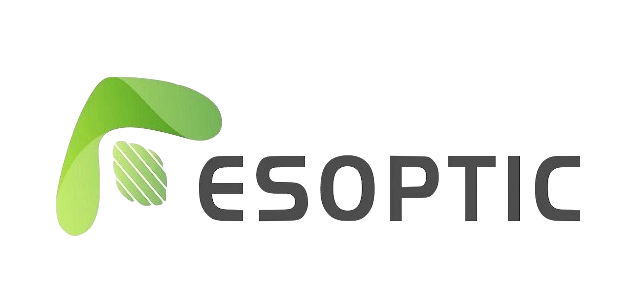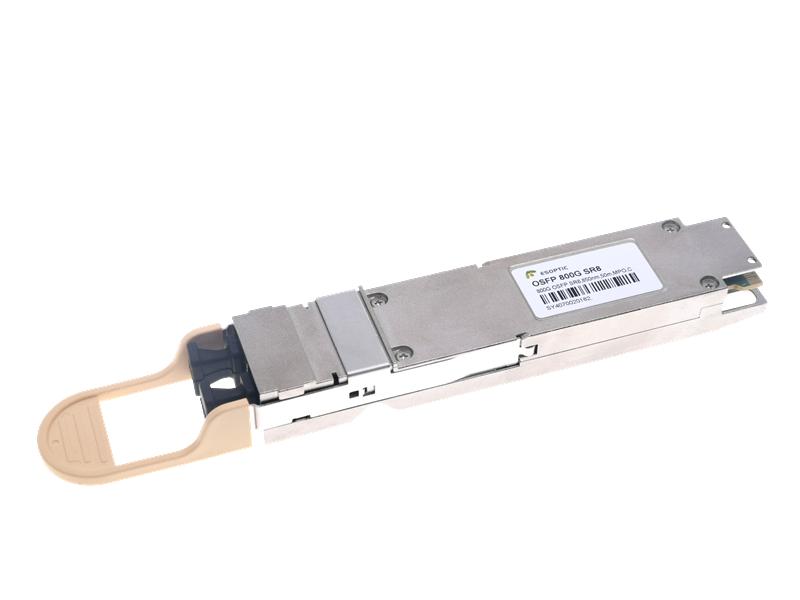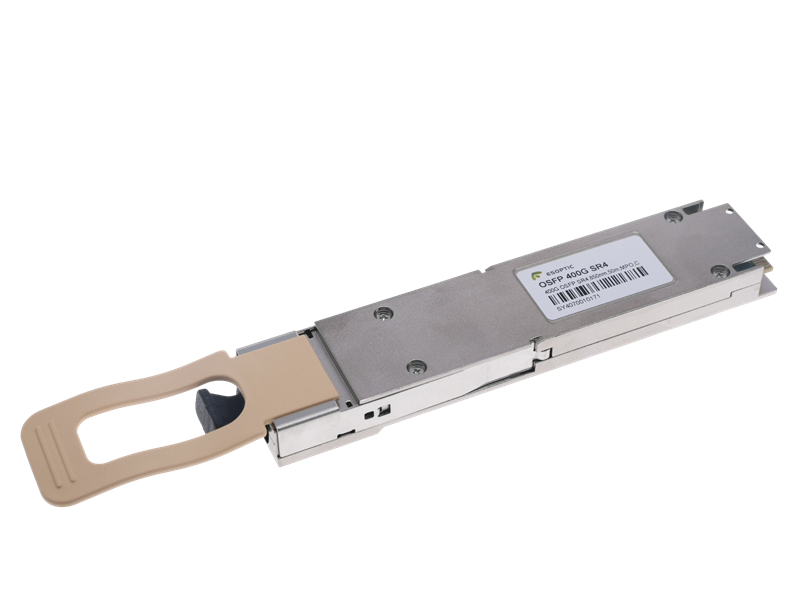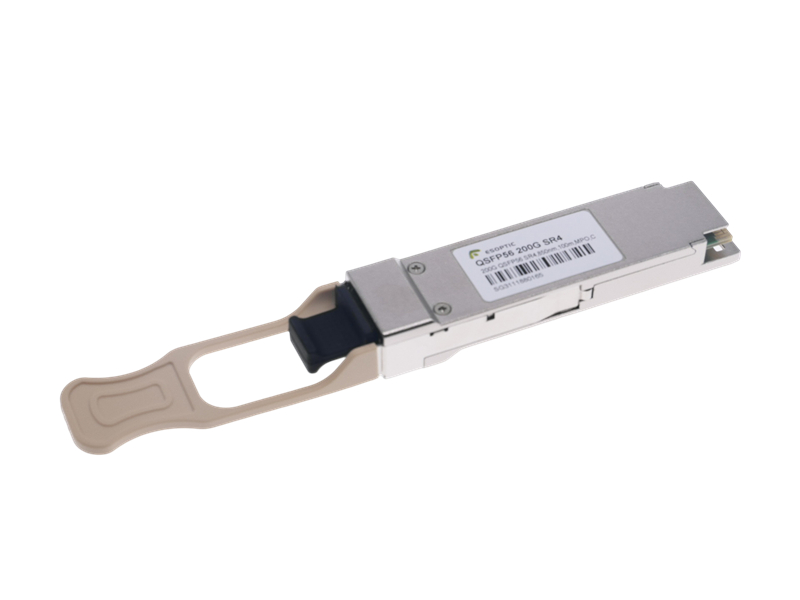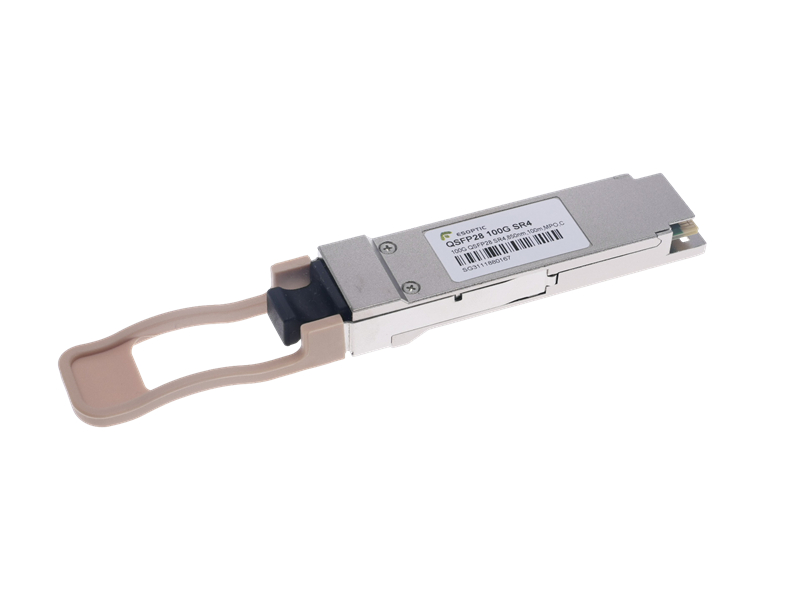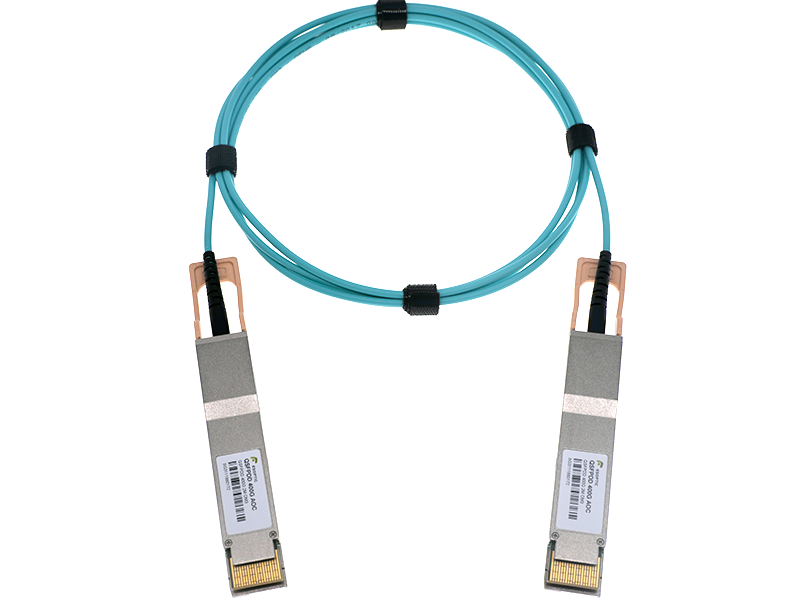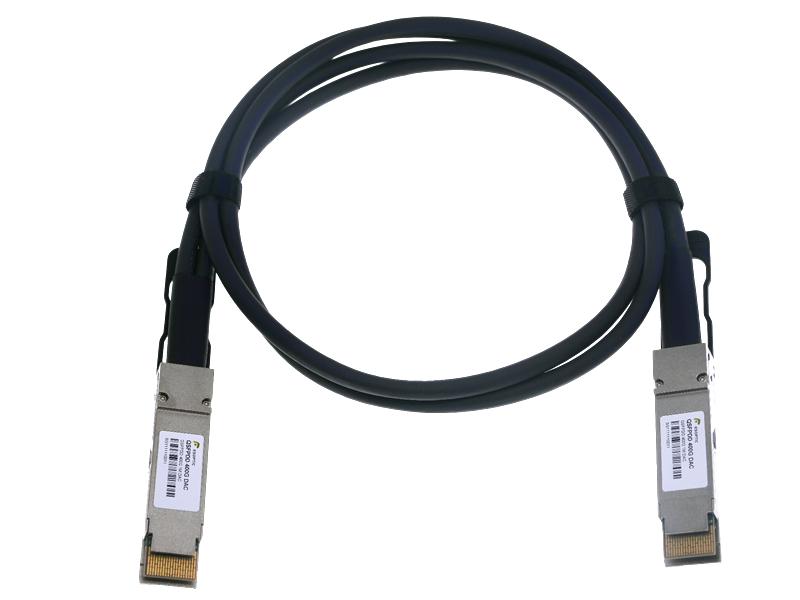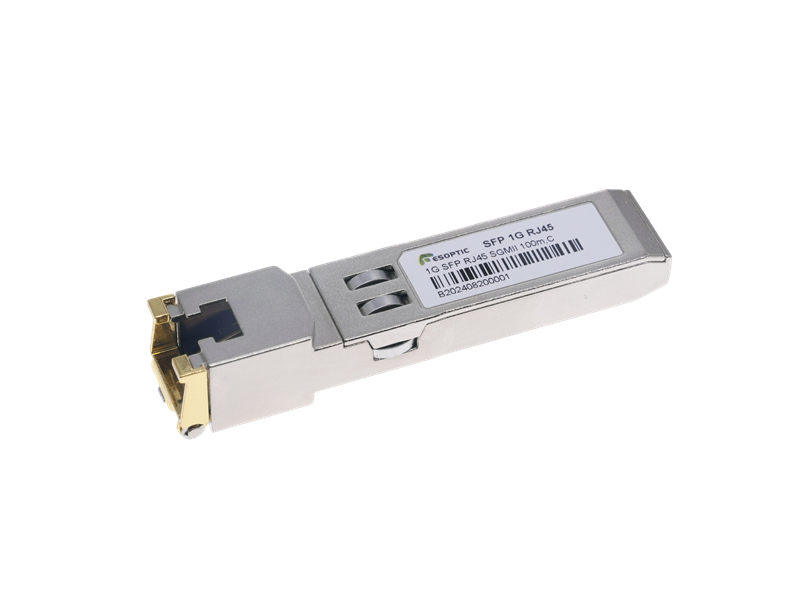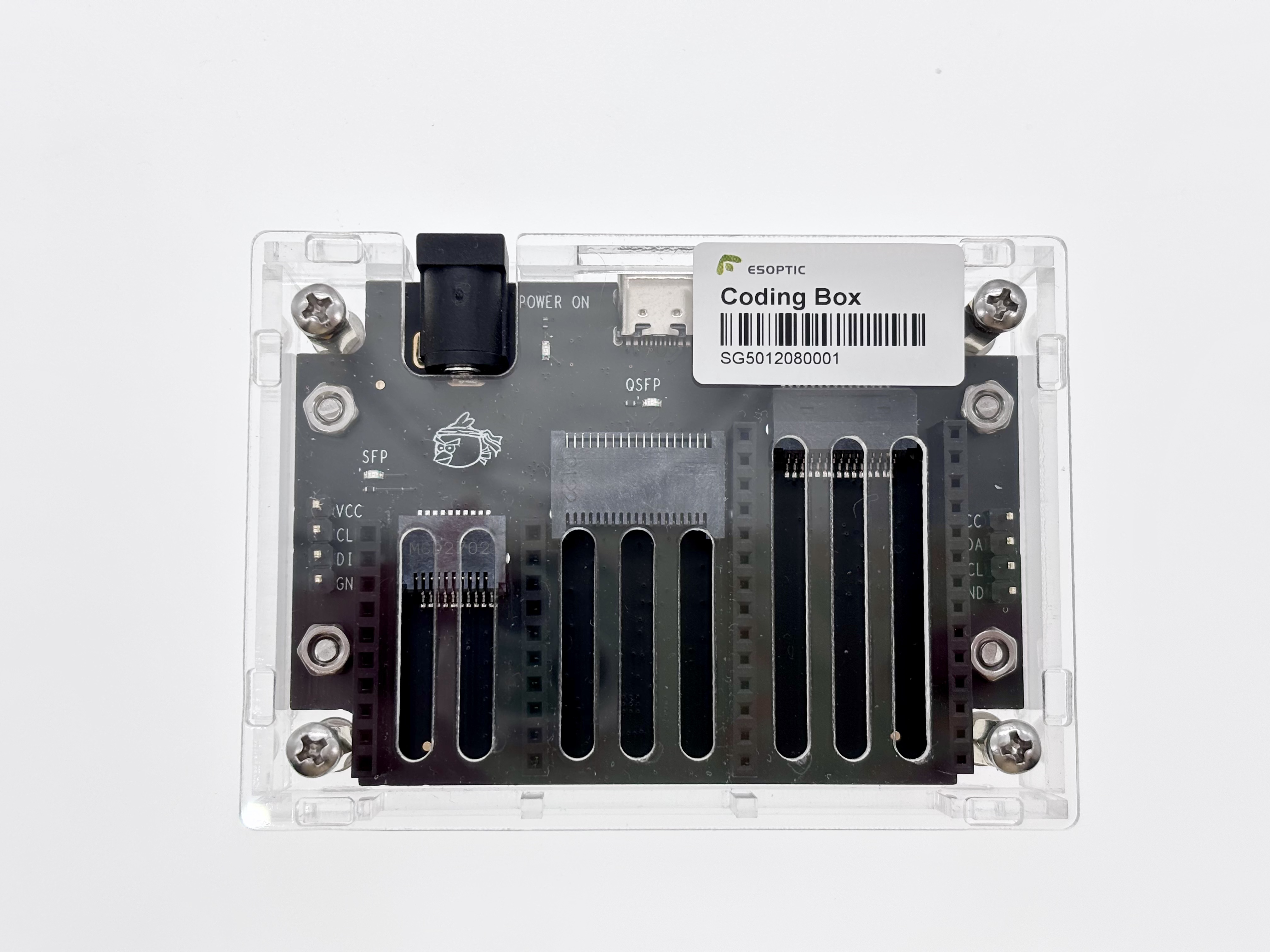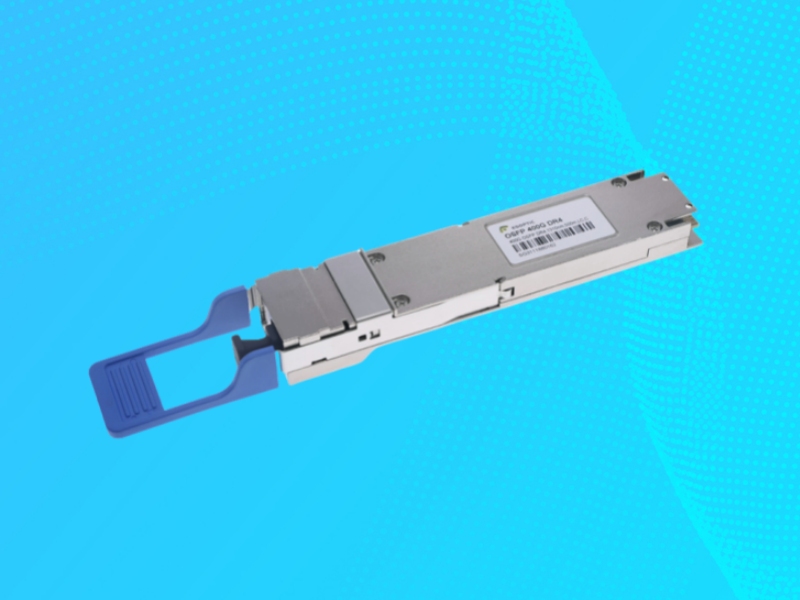Abstract
Driven by the explosion of AI computing power and the iteration of data centers,400G OSFP modules are becoming the core components of high-speed networks. With its self-developed 400G OSFP transceiver technology, ESOPTIC provides high-density, low-power ultra-high-speed interconnection solutions for global customers. This article analyzes how 400G OSFP reshapes the next-generation network infrastructure from the dimensions of technical architecture, scenario adaptation, and selection strategy.
Technological breakthroughs and architectural advantages of 400G OSFP
400G OSFP adopts an eight-channel design, and the single-channel rate supports 50G PAM4 or 100G NRZ modulation, with a total bandwidth of up to 400Gbps. ESOPTIC's EOLO series 400G OSFP modules use innovative thermal management design to control power consumption within 9W, while being compatible with future 800G upgrade requirements. Its core innovations include:
Double-density PCB layout: optimize signal integrity and reduce crosstalk to below -35dB
Adaptive dispersion compensation: support single-mode fiber transmission up to 2 km (DR4 model) or 80 km (ZR+ enhanced)
CMIS 5.0 protocol support: realize online firmware upgrade and flexible multi-rate switching
Compared with QSFP-DD, OSFP's package depth increases by 15%, but its heat dissipation efficiency increases by 40%, making it more suitable for high-density AI server cluster deployment.
From 10G to 400G OSFP: Generational Transition of Transceivers
ESOPTIC reveals the generational differences through vertical comparison:
| Metric | 400G OSFP Transceiver | Active Optical Cable (AOC) |
|---|---|---|
| Transmission Distance | ≤120 km (Single-mode) | ≤100 m (Multimode) |
| Power Consumption | 1.5W (Typical) | 0.8W |
| Flexibility | Replaceable fiber for multi-scenario adaptation | Fixed length, plug-and-play |
| Total Cost of Ownership | Lower cost for medium/long-distance scenarios | Price advantage for short-distance deployment |
ESOPTIC 400G OSFPmodule can be seamlessly connected to existing 10G/100G networks through backward compatibility design, reducing customer upgrade costs.
Three core application scenarios of 400G OSFP
AI computing cluster interconnection Build a 400G RoCE network between GPU server nodes to improve model training efficiency by 30%.
Data center backbone network upgrade Through CWDM8 technology to multiplex 8 wavelengths, a single fiber achieves 3.2Tbps throughput, replacing the traditional 4×100G stacking solution.
5G fronthaul and metropolitan area bearer network Supporting FlexE (Flexible Ethernet) slicing technology, a single module can simultaneously carry 5G baseband units (DUs) and edge computing service flows.
Selection Guide: How to match the best 400G OSFP solution?
ESOPTIC recommends selecting module models based on scenario requirements:
Short distance (≤100 meters): 400G SR8 (multi-mode fiber, power consumption 8W, suitable for intra-rack interconnection)
Medium distance (500 meters-2 kilometers): 400G DR4/FR4 (single-mode fiber, support PAM4 modulation)
Long distance (≥80 kilometers): 400G ER4/ZR+ (integrated SOA amplifier, suitable for DCI scenarios)
For heterogeneous computing environments, ESOPTIC provides customized OSFP modules that support the "out-of-band monitoring" mode of mixed 10G management channels and 400G data channels.
Future Trends: Silicon Photonic Integration and Standardization Evolution
ESOPTIC is working with the industry to promote two major technological innovations:
Silicon photonic integration: Integrate lasers, modulators and driver chips on silicon substrates to reduce the size of 400G OSFP by 20%
LPO architecture: Remove DSP chips, reduce module power consumption to 4.5W, and reduce latency to within 0.5μs
OSFP MSA 3.0 standard: Add 800G compatible interfaces and intelligent power consumption adjustment protocols, and achieve mass production in 2025
Summary
400G OSFP transceivers are redefining the performance boundaries of high-speed networks. ESOPTIC provides customers with end-to-end solutions for a smooth transition from 10G to 400G OSFP through independent chip technology, fully automated factories and forward-looking R&D investment. With the maturity of silicon photonic technology and LPO architecture, 400G OSFP will become the standard interconnection engine for AI data centers and computing networks.
FAQ
Q1: Is 400G OSFP compatible with existing 10G switches?
A: It needs to be converted to 4×100G or 8×50G interfaces through breakout cables. ESOPTIC provides a full range of adaptation solutions.
Q2: What is the delivery cycle of 400G OSFP in the ESOPTIC factory?
A: The standard model has sufficient inventory and supports global delivery within 5 working days; the customized demand cycle is 20 days.
Q3: Compared with QSFP-DD, what are the core advantages of OSFP?
A: Better heat dissipation performance, support for next-generation 800G upgrades, and a bit error rate as low as 10^-15.
